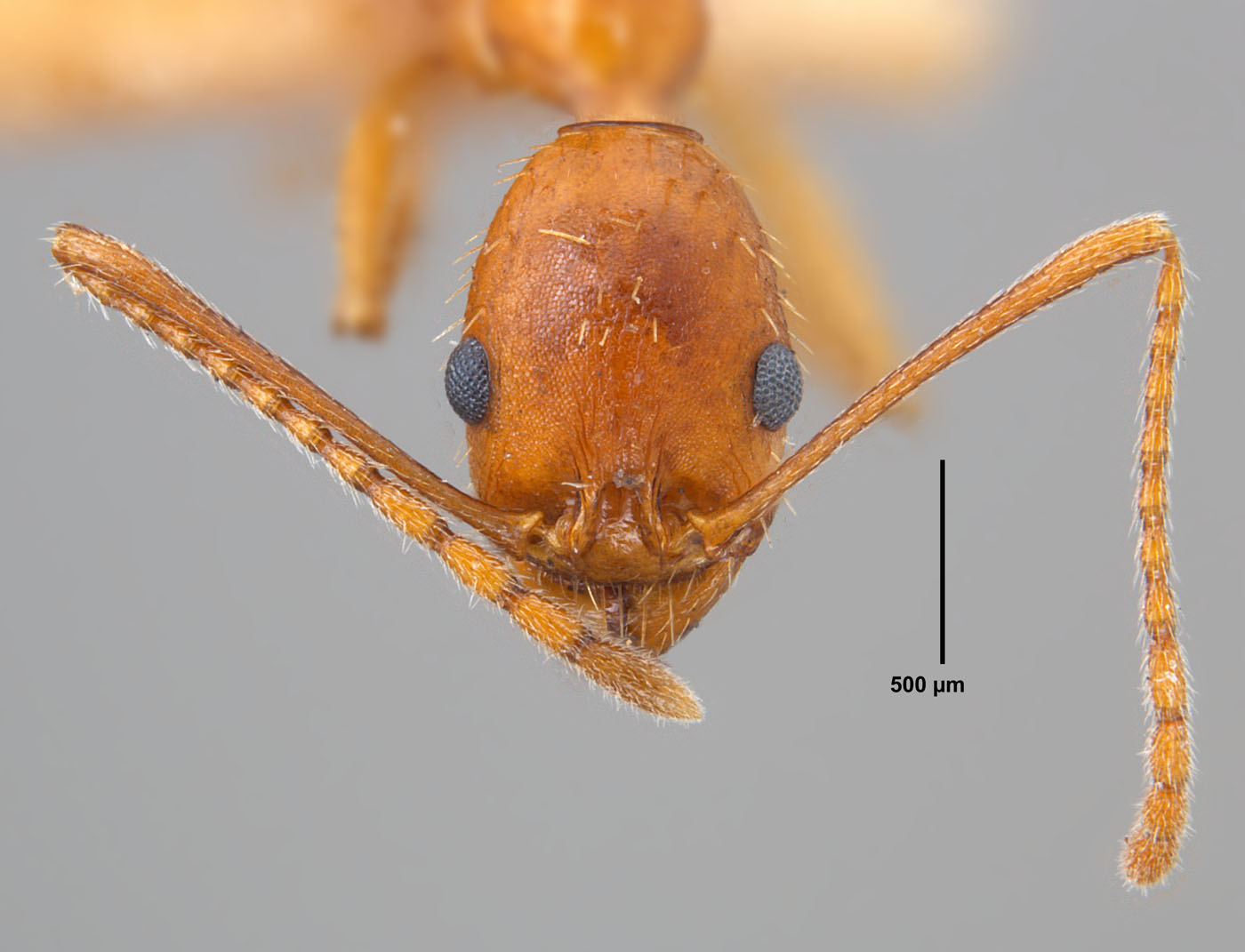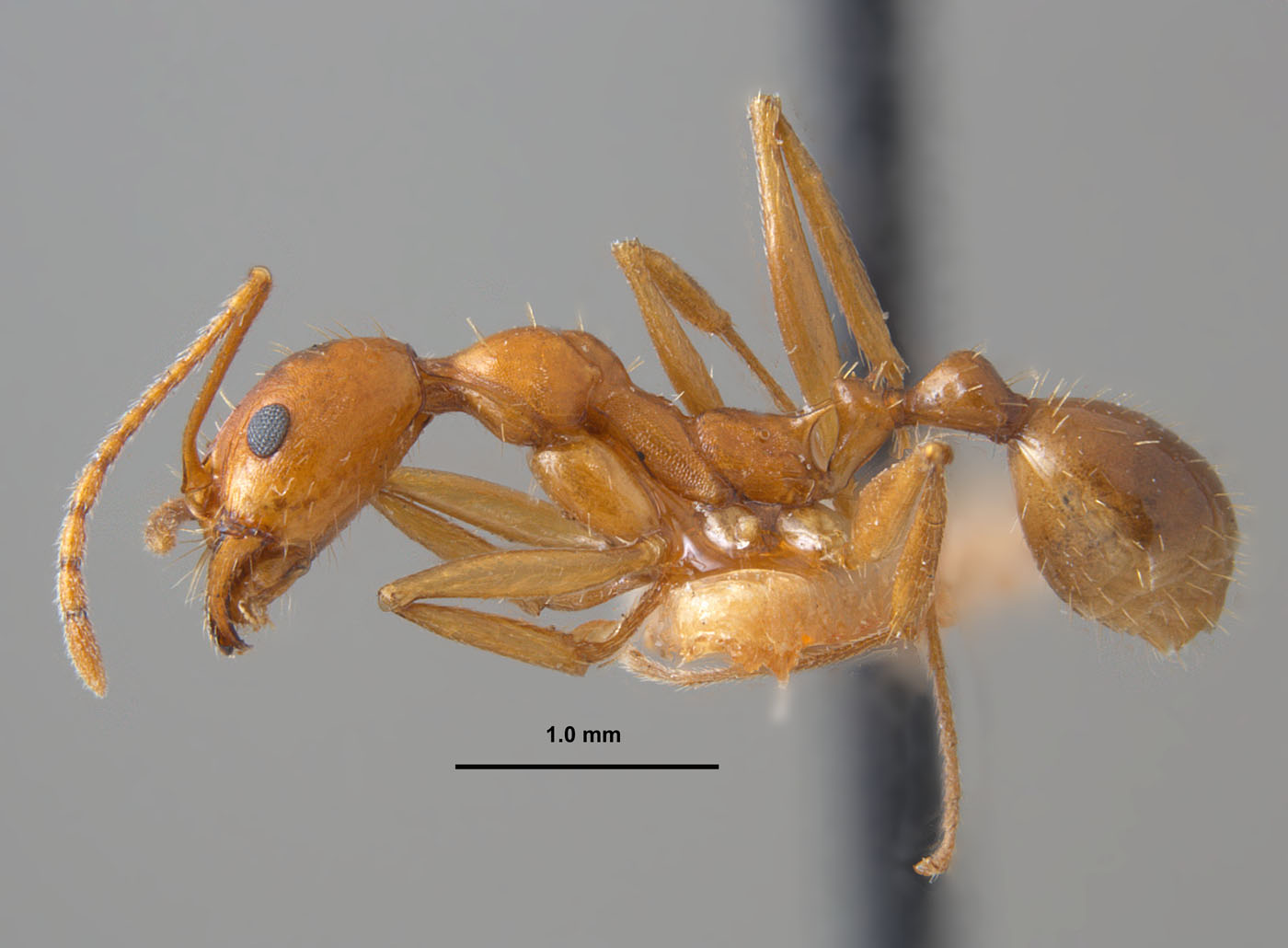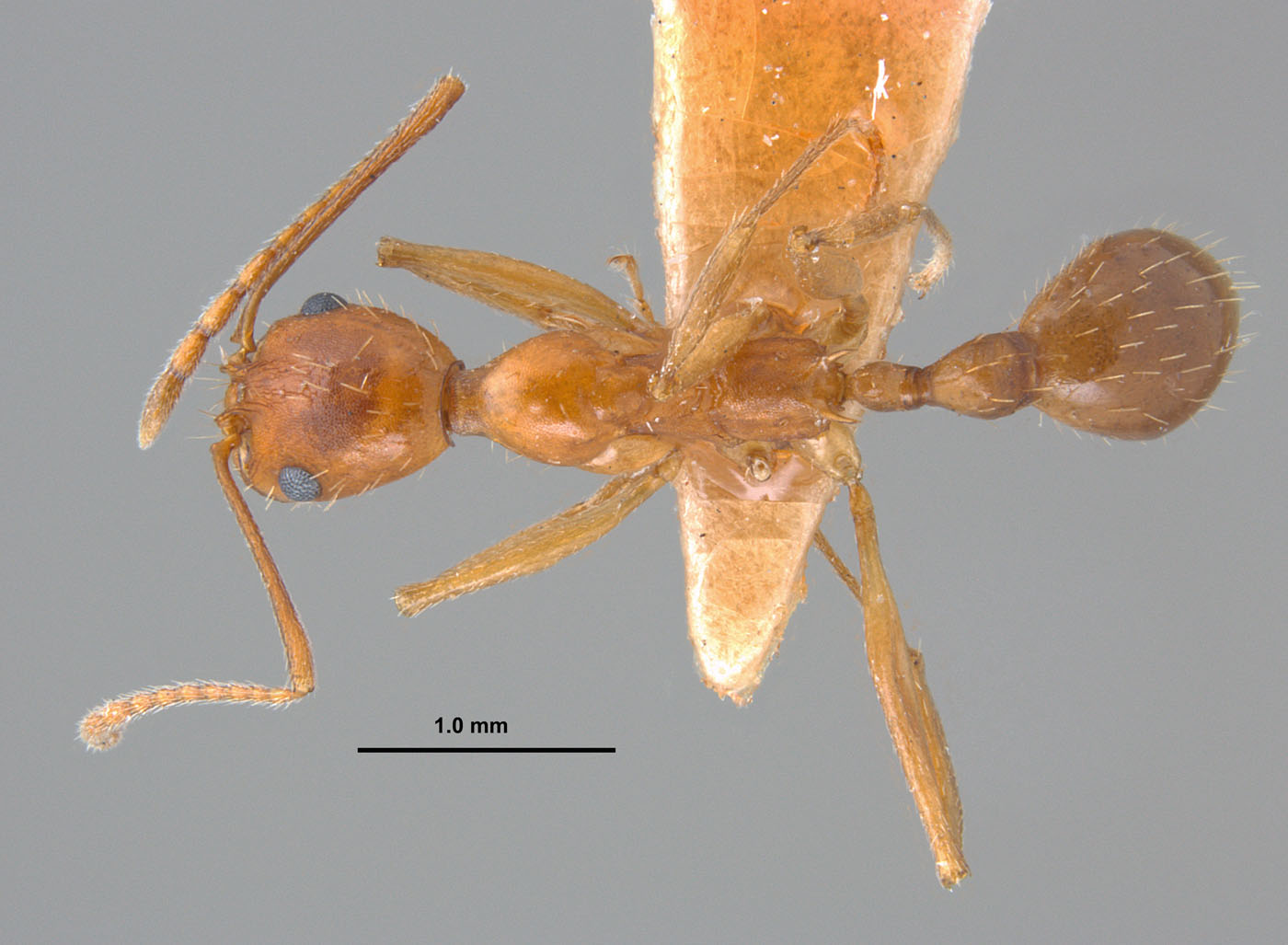Subfamily MYRMICINAE Author: Joe A. MacGown |
||
 Aphaenogaster flemingi, full face view of alate queen (MISS, Oktibeha Co.). (photo by Joe A. MacGown) |
 Aphaenogaster flemingi, lateral view of alate queen (MISS, Oktibeha Co.). (photo by Joe A. MacGown) |
 Aphaenogaster flemingi, dorsal view of alate queen (MISS, Oktibeha Co.). (photo by Joe A. MacGown) |
Introduction Identification Biology and Economic Importance Although this species has the potential to sting, it is unlikely to pose any serious threat due to its non-aggressive behavior. Furthermore, because it appears to prefer relatively undisturbed habitats, it is unlikely to be a nuisance pest in urban areas. Distribution Literature Cited Links |
||


